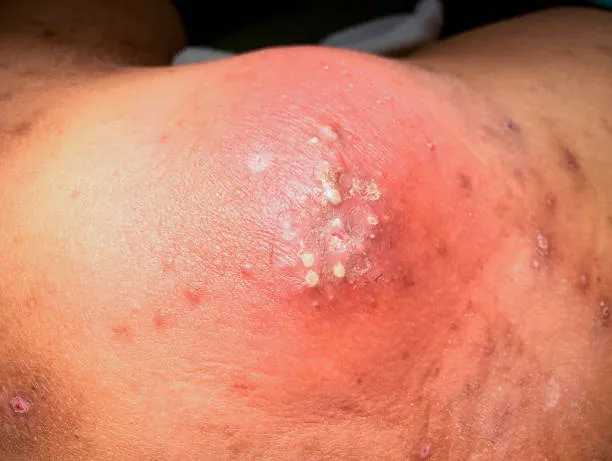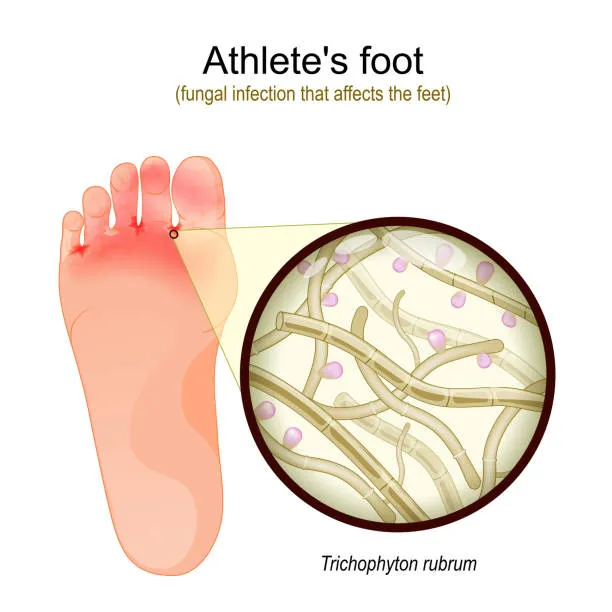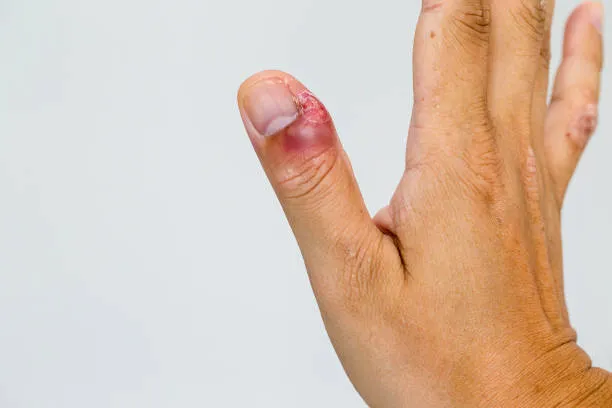Hello Everyone ; How are you all?I hope all are doing well I am also doing well.Today I am talk about skin infections.It is so common disease but very dangerous.
As an athlete, you know the importance of keeping your body healthy to perform at your best. But with rigorous training and competing, comes the risk of skin infections. While they can be caused by a wide variety of sources, they are a common problem for athletes. And if left untreated, they can become very serious. Fortunately, there are some simple steps you can take to help prevent and treat skin infections in athletes. With the right knowledge and precautions, you can keep your skin healthy and your performance at its peak.

What are skin infections?
A skin infection is an inflammation of the skin caused by a bacterial, viral, or fungal infection. There are many different types of skin infections, including impetigo, cellulitis, and folliculitis. Some of these infections can be easily treated and are not serious. Some others, however, can be more serious and lead to complications if left untreated. Skin infections can occur anywhere on your body, including your head, neck, and groin area. Athletes are especially prone to skin infections on their skin-to-skin contact areas, such as their shins, arms, hands, and fingers. In fact, cellulitis and impetigo are the two most common skin infections in athletes. Other types of infections that can be found in athletic populations include erythrasma, tinea cruris (jock itch), herpes simplex, and scabies.
Types of skin infections
- Cellulitis - This is a bacterial infection of the skin that begins as an inflammation of the skin (redness, swelling, and warmth). This can progress to deeper layers of the skin and even to the muscles, joints, and other organs if it is not treated quickly. Signs and symptoms may include redness, warmth, pain, swelling, and tenderness of the affected area, along with a skin rash and blisters. Treatment includes antibiotics, rest, and fluids.
- Impetigo - This is a bacterial infection of the top layer of skin. It is most common in children, but can affect anyone. It is often spread in places that are moist or have poor hygiene, where bacteria can easily grow. Signs and symptoms may include redness, swelling, pain, and a red rash that looks like blisters, crusting, or white spots. Treatment usually requires antibiotics and sometimes an antifungal medication, too.
- Herpes simplex - This is an infection caused by the herpes simplex virus. This virus can cause blisters in the affected area. Herpes simplex can be found anywhere on the body, but it is most common on the face, hands, and fingers. It can be spread by skin-to-skin contact and touching an infected spot and then touching another part of the body.
- Jock itch - This is a fungal infection in the skin. It is a common infection in the athletic population and is caused by a type of fungus called tinea cruris. It is most common in the warm, moist areas of the body that have hair, such as the groin area, armpits, and the area between the buttocks and legs. Jock itch can be spread by skin-to-skin contact, such as by sharing towels, clothes, and playing surfaces. It can also be spread by touching items that have the fungus on them and then touching the affected area.
- Scabies - This is an infestation of the skin by the mite Sarcoptes scabiei. This mite makes tiny burrows under the skin and causes itching. Scabies is most common in people who live in close quarters with others, such as in nursing homes or sports teams. It is less common among younger athletes, but can be spread by sharing infected items, such as towels, bedding, or clothing. Signs and symptoms may include itching, redness, and bumps in the affected areas, especially on the wrists and hands, near the elbows, and the waistline.
Causes of skin infections in athletes
There are a variety of sources that cause skin infections in athletes. These include bacteria, viruses, fungi, and parasites. Skin-to-skin contact can also be a cause of skin infections. Athletes, who are constantly in close contact with each other, are at risk for skin infections. Some of the most common sources for skin infections in athletes include: - Poor hygiene practices
- Being a part of a team, especially in contact sports, requires you to get close to others. This can lead to sharing, touching, and putting all parts of your body in contact with other people's skin. While it's important to be close to others, it's also important to practice good hygiene to avoid spreading germs and getting sick. Athletes must understand how to clean various surfaces and how to clean themselves properly.
- Poor equipment hygiene - Shared equipment, inadequate cleaning, and a high volume of use can lead to various types of infections. Bacteria and fungi can live in and on equipment and be transferred to your skin if you don't clean your gear properly. Athletes must ensure they are cleaning equipment and surfaces after each use.

istockphoto.com - Athlete foot - Athlete foot (tinea pedis) is a common fungal infection that affects the skin between the toes. It is also called tinea and is spread by touching something that has the fungus on it and then touching the affected area. Athlete foot can cause redness, itching, scaling, and scaly skin between the toes, as well as on the soles of the feet and between the fingers. It is especially common in athletic populations because people are often in close contact with each other, are not wearing shoes, and have warm and moist areas on their feet.
- Herpes - Herpes is a viral infection that can cause blisters in the affected area. It can be found anywhere on the body, but is most common on the face, hands, and fingers. It is spread by touching an infected area and then touching another part of the body. Herpes can be spread by skin-to-skin contact, such as by sharing towels and surfaces.
Prevention of skin infections
In order to prevent skin infections, it is important to practice good hygiene and reduce your risk of sharing germs with others. This includes washing your hands, using clean towels and surfaces, and wearing clean clothing and shoes.
- Hand washing - It is important to wash your hands correctly and often. Hands are the most likely part of your body to come into contact with harmful germs, so keeping them clean is one of the best ways to prevent the transmission of infection. It is recommended that you wash your hands with soap and water for at least 20 seconds every time you come in contact with someone who is sick. This includes touching a doorknob after visiting a classroom or touching a fellow athlete after a competition. Keeping clean surfacessource

- You must also clean surfaces that are likely to come into contact with germs. You can use disinfectants or cleaning wipes for this. Be sure to read the instructions to be sure the product can be used on the surfaces you want to clean. It is important that you clean surfaces after each use with water and soap. This will help ensure they are clean enough to prevent the spread of germs. Keeping clean clothing
- Clothing is another surface that can become contaminated with germs. It's important to keep your clothing clean so that it doesn't become a way for germs to spread to you or others. When you are not using clothing, it should be stored in a clean place where other people won't come into contact with it. This includes clothing that comes in contact with your skin, such as athletic uniforms, shoes, and gloves. Keeping clean shoes
- Athletic shoes are another surface that can become contaminated with germs. They can actually become more dirty than the floors in many places because people walk through many different environments, from grass to concrete and indoors. Shoes can be a breeding ground for bacteria, especially when they are left unwashed for a long time. Be sure to clean your athletic shoes regularly for best hygiene and to prevent infections.
Source
Signs and symptoms of skin infections
The best way to identify whether or not you have a skin infection is to identify its symptoms. Depending on the type of skin infection you have, you may notice certain signs and symptoms, such as redness, warmth, pain, swelling, and tenderness of the affected area, along with a skin rash and blisters. If you are experiencing any of these symptoms, it is important to see a doctor as soon as possible. Depending on the severity of the infection, it may need to be treated with antibiotics.
https://orthoinfo.aaos.org/en/diseases--conditions/skin-infections-in-athletes/
https://www.aad.org/public/everyday-care/skin-care-secrets/routine/preventing-athletic-skin-infections
https://www.health.ny.gov/diseases/communicable/athletic_skin_infections/